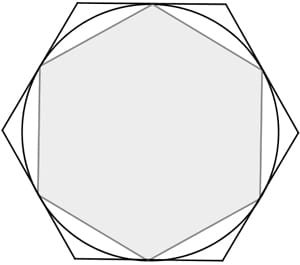
\[π = \frac{Circumference}{Diameter}\]

\[∵ Circumference (C) = Pi (π) * Diameter (D)\] \[∴ π = \frac{C}{D} = \frac{82}{26} = 3.14159…\]
\[\frac{π}{4} = 1 − \frac{1}{3} + \frac{1}{5} − \frac{1}{7} + \frac{1}{9}\]
\[π = 3 + \frac{4}{2*3*4} - \frac{4}{4*5*6} + \frac{4}{6*7*8} - \frac{4}{8*9*10} + ...\]
\[Pi (π) = (\frac{Circumference}{Diameter} = 3.14159…)\]